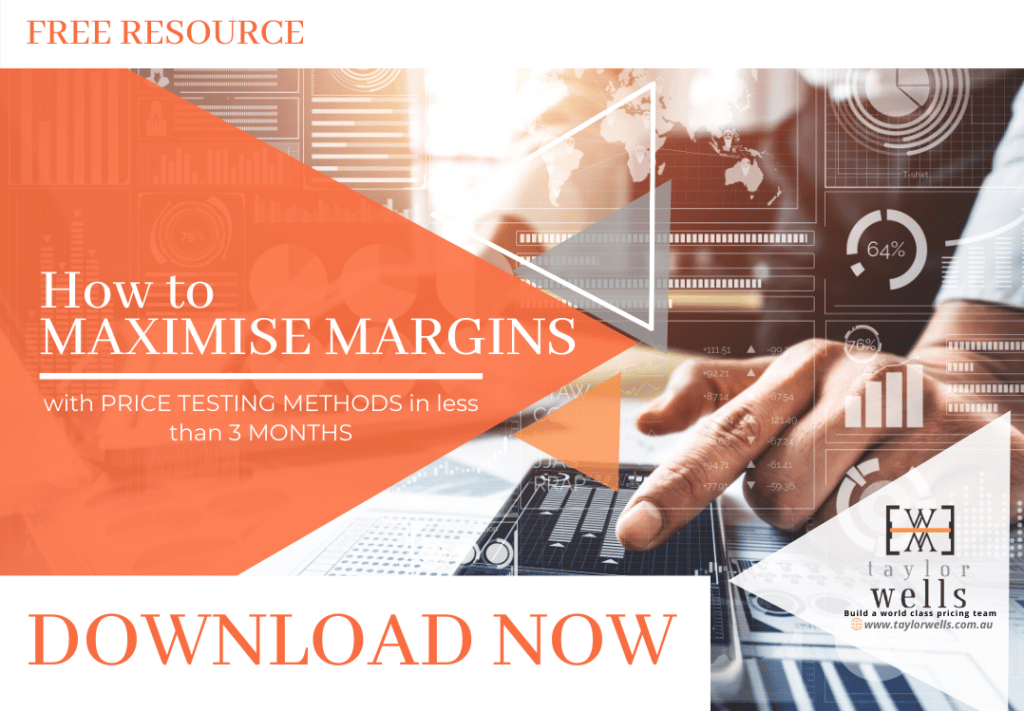
Machine learning pricing algorithms are not just profit maximising pricing tools, but, rather a movement that is redefining price and revenue management. It’s also a pricing language that’s transforming profitable revenue growth in your market and industry.
>Download Now: Free PDF Digital Transformation
We’ve been hearing a lot about algorithms in the press recently, but are price algorithms like ‘dynamic pricing algorithm python’ really as good as vendors say or are they all just sales hype?
In this article, we will demystify algorithmic pricing. Also, explain the pros and cons of price algorithms like dynamic price algorithms python. In addition, we will share some of the known risks pricing teams have dealt with when they’ve installed a new price system.
Introducing algorithmic pricing…
A pricing algorithm is a quantum leap from fixed pricing, mark up to mark down and simplistic cost-plus calculations. A sophisticated price algorithm is a customised heuristic, integrated within a pricing system. Furthermore, it enables a pricing team to implement and adjust differentiated price strategies across many different products and customer segments.
The beauty of pricing algorithms like dynamic pricing algorithms python is that they enable pricing teams to find out almost instantly if a price action or strategy is working or not. A pricing algorithm works away in the background predicting changes to implement optimal prices. What’s more, there’s no excel spreadsheet involved or time wasted updating and reviewing prices manually.
All price reviews are automated to a specification. Leaving the pricing team much more time to identify and capture new revenue and share-of-wallet opportunities.
Capability Building Programmes For Pricing & Sales Teams!
What is a Dynamic Pricing Algorithm?
If you are new to algorithmic pricing, a dynamic pricing algorithm is a customised heuristic operating typically within a high power pricing system. The algorithm is like the pricing blueprint or pricing logic in code. The pricing system is the price data technology running the pricing logic and queries really, really quickly.
Essentially, the pricing system churns through tons of price volume data, sales transactions, orders, promotions and special offers. While the price algorithm is the set of rules that guides the automation and calculates the optimal price changes across the product portfolio and different customer segments.
How did businesses set and manage price before machine learning pricing algorithms?
Before algorithmic pricing, B2C and B2B companies basically did margin targeting using cost-based pricing. Unfortunately, margin-based pricing or cost-based pricing leaves ALL businesses vulnerable to revenue loss, lost profit and customer flight.
Cost-based pricing is like a really rudimentary price algorithm. Basic price algorithms like cost-plus pricing put businesses at risk because they either push up prices too high – leading to volume loss – and or set prices too low – leading to revenue loss.
So in a way, algorithmic pricing has always been around. The main difference now is that they are much more sophisticated than they used to be.
Case study: Amazon book pricing algorithm
Amazon’s pricing algorithm is an excellent example of dynamic pricing algorithms for e-commerce (the opposite of a basic cost-plus algorithm). Amazon is one of the first to implement sophisticated algorithmic pricing. Its strategy is not just using internal inputs to adjust prices, but also external inputs as well derived from an open algorithmic marketplace.
To get this data, Amazon provides outside sellers with an API (Amazon Marketplace Web Service). Their API basically enables Amazon to collect and monitor real-time data updates on consumer buying patterns. It also churns through data relating to competitive price responses, new product pricing opportunities, tactical discounting levels and recommended inventory and pricing levels.
In essence, Amazon’s API enables them to build and inform a sophisticated dynamic pricing system, which is capable of sourcing data and informing price decisions in near real-time.
After refining its API technology over the past few years, Amazon is now in a great position to capitalise on its business, pricing and distribution model. The data collected from the website, for example, feeds into their price optimisation algorithms prices every 15 minutes. This is essential for Amazon because around 18% of the revenues come from third-party seller services. Including commissions, fulfilment, and shipping fees. What’s more, 3,000 sellers join the marketplace every single day. This means their dynamic pricing algorithm helps them forge a better e-commerce capability to not only set prices but also manage the marketplace and arbitrate sellers.;
Will Shoppers Pay More for a Better Retail Experience 🛍 Podcast Ep. 90!
How do pricing teams benefit from machine learning pricing algorithms?
Dynamic price algorithms are growing in popularity with both B2C and B2B businesses across many industries (banking, insurance, FMCG, retail). Many of the best pricing teams are using price algorithms to set and manage price.
Key advantages of price algorithms are:
1. They can (if designed correctly) help pricing teams to pick up on loss-making price actions and course-correct almost in real-time to avoid substantial volume and margin losses.
2. They help pricing teams to find previously unrealised revenue and margin opportunities much faster while generating incremental EBIT growth safely.
3. They generate useful output via data visualisation tools and dashboards. But of course, only when all the key data inputs have been defined in the back-end pricing system, and the algorithm has been customised for the business, industry and market.
Functionality to look for in AI pricing programs
Not all price algorithms are the same. In fact, each business should have its own price algorithm. Here are a few popular types of pricing algorithms businesses use to set and manage prices and revenues:
- Policy-driven streamline – this is a price algorithm developed from fairly rudimentary business goals and pricing policies (input data). The danger here is that the price review process is very inward-looking and not an accurate view of the market at all.
- Advanced segmentation – this is a price algorithm that sets and manages price reviews using a range of internal and or external factors or pricing rules (like in the Amazon example above). For example, in retail businesses, prices fluctuate during the course of a day or are adjusted to different customer groups or segments using tactical discounting.
- Micro-segmentation – is a useful aspect of algorithmic pricing because it enables the price system to account for all the price variations across many different customer and price groups. Consequently, it also takes into account price sensitivity, awareness and willingness of the customer to pay, wait or accept a substitute.

Standout Capabilities of Machine Learning Pricing Algorithms
The hallmarks of a good price algorithm are:
- Dynamic pricing – It sets prices based on the business and competitor’s price, trends and volume/demand drivers and any supply-side elasticities.
- Personalised pricing – It can be programmed to set prices and discount levels based on differences in consumer attributes, preferences, value drivers, price sensitivities, and buying behaviours.
- Differentiated pricing strategies – It can be adjusted to good, better, best pricing principles. Also, it uses price tiers and versioning to influence shoppers to first engage with your basic reference products and then upgrade to more premium product types.
- Efficiency guarantees – It can set prices based on product placement, branding and price positioning, time of launch date in the market.
- Advanced internal indicators – It does lots of statistical analyses of transactional data, inventory, catalogue data to inform product cost position at any one time. These are internal indicators of the price which the programmer may choose to incorporate in the algorithm.
- Integration with merchandising and inventory management – It can also perform deep-dive analyses on stock levels and selling frequency to keep track of inventory and avoid under-stocking and overstocking. These are again internal indicators. The programmer may want to account for supply-side elasticities and maximise inventory at the best price.
A checklist to assess machine learning pricing algorithms
If you are considering buying new pricing technology and want to understand the backend price algorithm a system uses, or want to create your own algorithm, you should have a few resources at hand first. We recommend the following:
1. You need to have expertise and insight on the business operations, market, customer base, product portfolio to construct the right pricing algorithm – out of the box solutions don’t work and create serious delay and issues with zero margin gains.
2. Buying a pricing system does not mean it is already equipped with a price algorithm right for your business. Therefore, we highly recommend that you meet the programmer or implementation consultant to see how much they really know about pricing and the challenges you face in your industry. And, preferably before you buy the new system.
3. Pricing algorithms are created by people (usually IT programmers who have ample IT programming and system knowledge but limited pricing expertise or industry knowledge). The sales consultant may not want you to look behind the scenes, however, it’s worthwhile knowing how much the programmer understands about your business and pricing before they work on your algorithm.
look behind the scenes
4. Vendors of price algorithms and the system typically have one basic algorithm which they partly adjust based on the requirements you give them. Meaning, if you or your team are looking to them for pricing expertise, they are in fact, looking to you and don’t have the expertise you really need.
5. The system automates the algorithm even if the algorithm is good or bad. Before you roll it out in the market, make sure you’ve tested and tested, and pilot tested the algorithm.
6. All systems even AI systems have limitations and are prone to change.
7. The pricing team needs to constantly run experiments, price trials and test to work out and adjust input parameters, bandwidths, price floors & ceiling, and price ladders.
8. You cannot run the same price algorithm forever. Pricing is a system, not an event. This is why you need a pricing team.
Pricing Recruitment For Pricing Managers!
Implications
How do you know if machine learning pricing algorithms are effective?
The price-setting process you choose to automate is effectively your price algorithm. In other words, a price algorithm is only as good as:
1. The quality of the input variables you feed into the system
2. Your price data strategy
3. Your price architecture and design
4. The expertise of the person creating the algorithm
5. The calibre of your pricing team and their ability to read the output of the algorithm
The challenge here then is to construct the right pricing algorithm. Also, to find the right AI software system to run it. Not an easy thing to do at all.
The trap many businesses fall into, unfortunately, is automating a rudimentary cost-based algorithm or price volume algorithm. Still, to this day, very few businesses or software providers have nailed the perfect price value profit equation. Many are dressing up basic price algorithms with fancy IT systems. Which only really serves to automate the same old mistakes, but much faster.
〉〉〉 Get Your FREE Pricing Audit 〉〉〉
Conclusion
The pressure is now on for pricing and revenue management functions. That is, to understand and learn how to inform and use pricing algorithms to drive profitability. Or else face many years managing overly complex pricing systems that are out of whack with the market. And ultimately leaking hard-earned margin on a daily basis.
If you already bought or are considering to buy an AI-driven pricing system or looking to introduce algorithmic pricing to your business, remember all IT systems have limitations. You need to know what these limitations are to manage them appropriately.
It takes years for AI-driven price algorithms to learn your market and understand what price actions work or not. This is why you need a world-class pricing team monitoring and guiding the system and auditing the price algorithm.
A pricing team should always lead a pricing system, not the other way around.
A customised price algorithm is not a black box solution.
Click here to access your free pdf guide on driving pricing strategy in your business.
For a comprehensive view and marketing research on integrating a high-performing capability team in your company,
Download a complimentary whitepaper on How To Maximise Margins.
Are you a business in need of help to align your pricing strategy, people and operations to deliver an immediate impact on profit?
If so, please call (+61) 2 9000 1115.
You can also email us at team@taylorwells.com.au if you have any further questions.
Make your pricing world-class!

